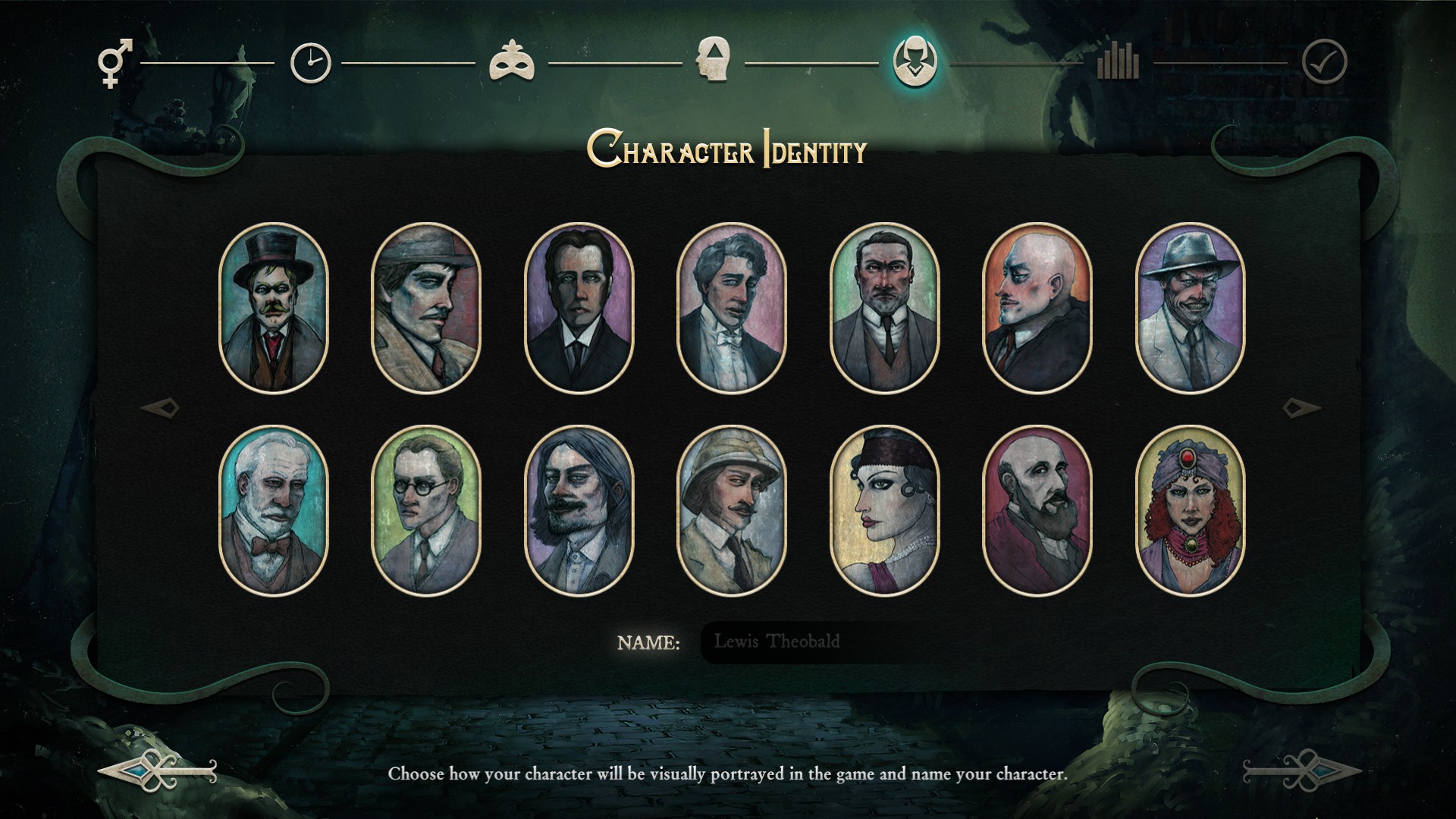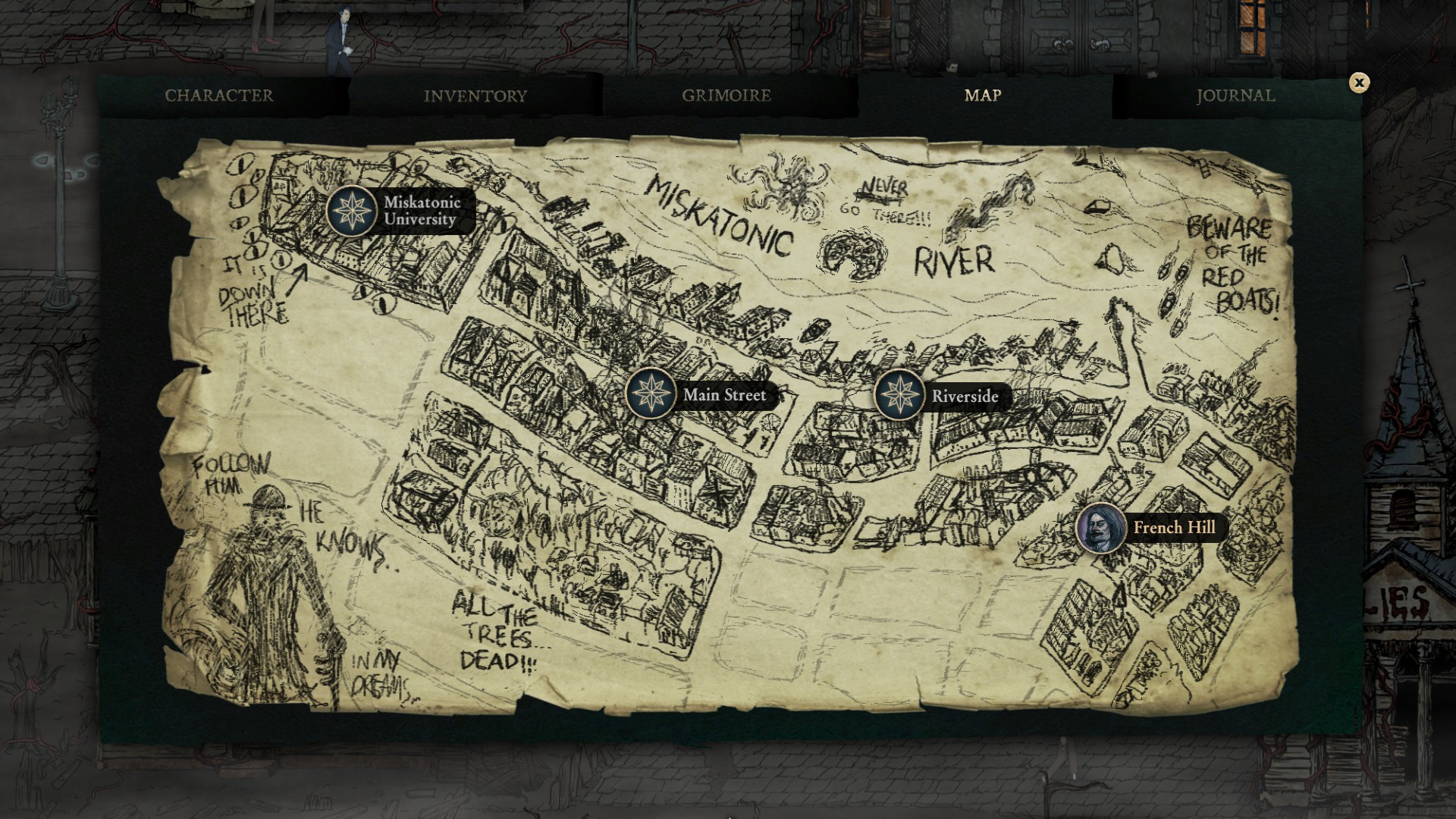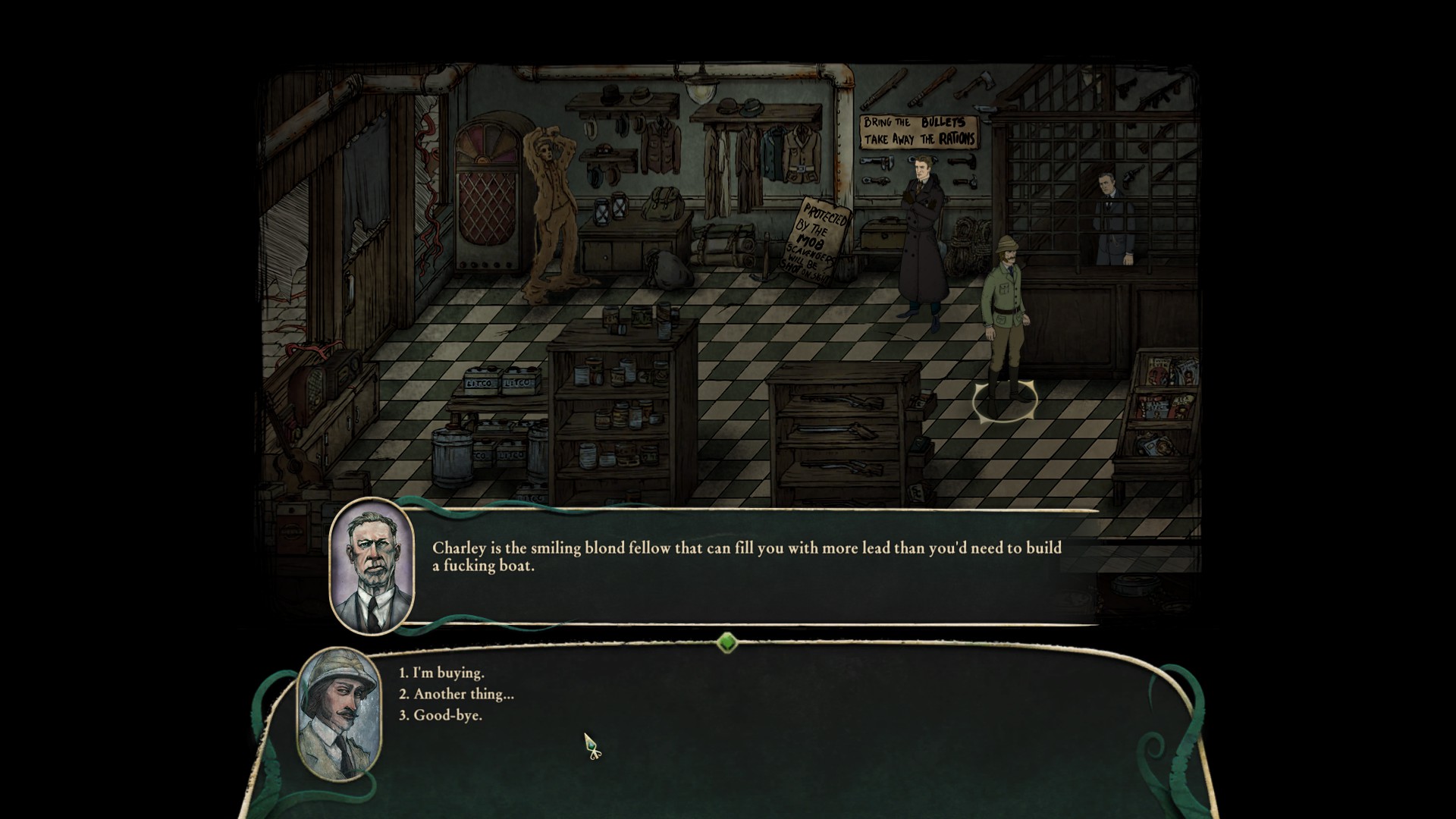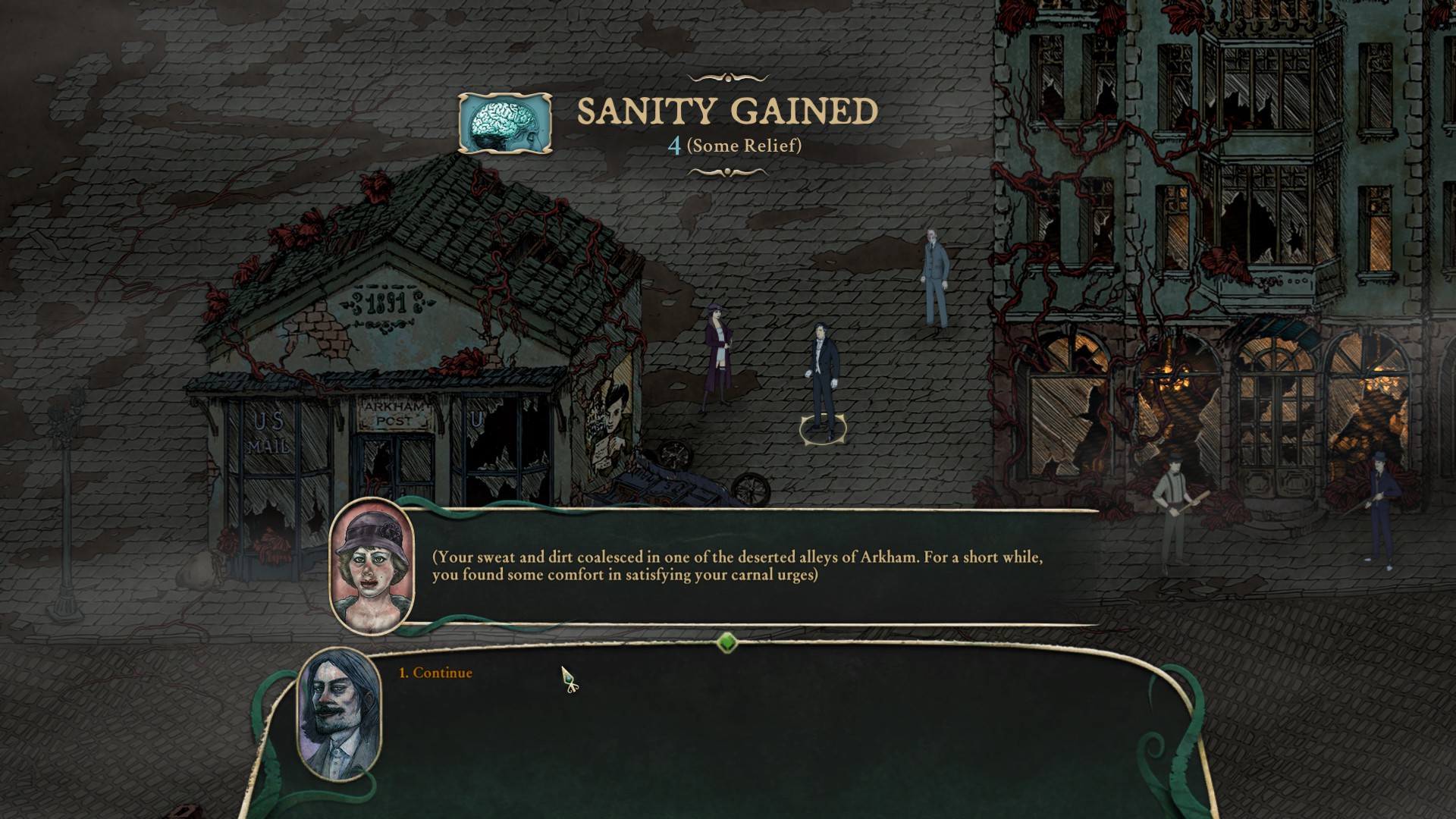Cthulhu goes post-apocalyptic in Stygian: Reign of the Old Ones
It's the end of the world as we know it.

In most eldritch horror fiction, the heroes’ goal is to prevent the end of the world. In Stygian: Reign of the Old Ones, an isometric tactical RPG, the end of the world has already happened.
“We define Stygian as a role-playing game about horror, loss, and madness,” says Can Oral (pronounced Jon Rahl), lead designer and creative director at Cultic Games. “It takes place after the awakening of the great old ones. Your goal isn’t about saving the world, it’s already too late.”
The story takes place in the city of Arkham, which has been torn loose from the ruins of Earth and floats under an alien sky beneath a perpetual lair of gloom and despair. The city has been divided up between pagan cultists and ruthless mobsters, and many of the residents have either gone insane, or are teetering close to the edge.

Oral walked me through the demo for Stygian, which is currently available on Steam. Like most RPGs, the first step is to create a character. Eight classes are available, based on Lovecraftian archetypes such as occultist and investigator. Each archetype can be further customized using backgrounds, a bit like the kits in Baldur’s Gate 2.
In addition to the default adventurer background, my explorer can specialize as a big game hunter, mountaineer, or pathfinder, each conferring stat bonuses and penalties. From there I can assign points into my attributes and skills. Character creation will be very familiar to RPG veterans, while adding a touch of hard-boiled mystery-horror with skills such as occult, psychology, and subterfuge.
None of this is particularly groundbreaking, though choosing my character’s age is much more than just an aesthetic choice. Age affects how NPCs address me, as well as my starting attributes and skills. Younger characters start with higher physical stats but less skill points, and vice versa. I chose to play as an experienced, older hunter, and selected a portrait that looked suspiciously like the evil Van Pelt from Jumanji.

“As a team we grew up playing games like Fallout, Baldur’s Gate, and Planescape Torment,” says Oral, ”and we wanted to recreate that kind of experience.”
Keep up to date with the most important stories and the best deals, as picked by the PC Gamer team.
Throughout the story we follow the enigmatic clues and footsteps left by a mysteriously shrouded figure called the Dismal Man. After experiencing a nightmare in the opening tutorial, I retrace the Dismal Man’s steps to find a key glinting on the ground. Asking around town points me toward Schmidt’s Antiques, and its key-obsessed merchant, Isidore.
Isidore’s offers to buy the key, raising the price in cigs—Arkham’s currency, like a prison, is cigarettes—until they reach 1000. At this point I actually have the option of selling the key, which Oral tells me leads to a gameover state.
“We give the player the right to abandon the main quest,” says Oral. “Remember in Choose Your Own Adventure game books, you died a lot! We have that element in our game.”
Isidore refuses to deal with me when I turn him down. I’ll need to employ one of my skills to get the information I need. In this case, my superior athletics. From the radial menu I select the athletics skill after clicking on the book. I successfully swipe it, and learn from reading the book that the key is for a safe deposit box. We’re off to the bank.

Along the way I hire a dashing Cuban immigrant named Eduardo, who approaches me in the streets. Henchmen are hireable NPCs whose loyalty is bought and paid for but they have no inventory and can’t level up. Soon afterward we see a creepy figure wrapped in bandages being assaulted by townsfolk. I decide to intervene, drawing us into combat.
Oral describes the combat system as a combination of Heroes of Might and Magic 3 and the first two Fallout Games, which is a lot to live up to. We take turns moving on a hex grid, exactly like the HoMM series. Each character has eight action points and I have to balance movement, melee attacks, and ranged attacks accordingly.
The hand-drawn art style suffers a bit in combat with limited animation, and the drab townsfolk aren’t exactly exciting enemies, but I can already see the potential for rewarding tactical combat. With my trusty rifle and Eduardo’s pistol we make short work of the enemy forces. My rifle packs a punch (the perk of being an explorer) but Oral warns that ammo is scarce and expensive.

The unnamed creature is creepy but friendly, and he joins my party as a companion member, The Outsider, with strong mental fortitude and his natural ghoulish claws. “As a game designer i wanted the player to perceive reality from their own point of view,” Oral says. “You never know if characters are mad or telling the truth.”
This is a game about enduring, not conquering
Can Oral
We head inside the bank. This being Arkham, the bank is ruined and filled with lunatics, Stygian’s equivalent of low-level goblins. The lunatics are numerous but not particularly strong, though they have a nasty habit of emitting a howling scream that damages all my characters’ sanity.
Sanity adds an interesting new element to combat and exploration. Like in the Arkham Horror series of board games, Sanity operates as a secondary damage source and health bar. Enemies can deal mental damage, and witnessing horrific acts will lower your sanity, while solving quests, reading books, and drinking alcohol can restore it.

You can also restore sanity via the character’s chosen belief system. At character creation I chose humanitarian, which means helping people (like the Outsider) restored my sanity points. In other words, Stygian rewards you for properly role-playing your chosen belief. Humorously, the nihilist cannot restore sanity through actions, though they do gain more mental resistance.
“We wanted the player to feel the fragility of the human being,” says Oral. “We have a system called angst, like the Jungian term angst. Throughout the game whenever you gain an angst level you have to choose a defect for your character.” Angst acts like a twisted version of an experience bar, gradually building up over time and adding new mental traits and afflictions. These conditions manifest as new dialogue options. Mental afflictions are a solid use of the horror theme without relying solely on sanity as another health bar.
The other interesting aspect to combat is what Oral calls the progressive escape. Once I’ve defeated a few foes, escape hexes appear on the combat screen. I have the option of running there and escaping, which successfully completes the encounter and awards the full amount of experience at the cost of some potential loot. “In Stygian there’s nothing to be ashamed of. This is a game about enduring, not conquering,” say Oral. “Escaping may be worth it to preserve sanity and health.”

Even with the escape option, the bank becomes a slog as I trudge through several screens fighting the same lunatic enemies over and over. None of them are terribly threatening individually, but after awhile my party is starting to get low on health and sanity.
After conversing with an insane bank teller (which leads to yet another lunatic battle) we finally discover the safe deposit box. The hand-written notes I’ve been finding throughout the bank are a lovely touch, and it finally leads to a Cthulhu statue hidden behind a painting. As I turn to leave a demonic creature appears, ending the demo.
The full campaign will be between 15-20 hours, relatively short compared to the RPG titans that serve as Stygian’s inspiration, but promising a healthy dose of replayability given all the character choices and skill sets.
Stygian: Reign of the Old Ones checks all the right boxes for an old school tactical RPG, but the bar has raised significantly in the age of Divinity: Original Sin 2. The eldritch horror theme helps set Stygian apart though, giving it a richly dark flavor that should make this descent into madness worth the effort.

